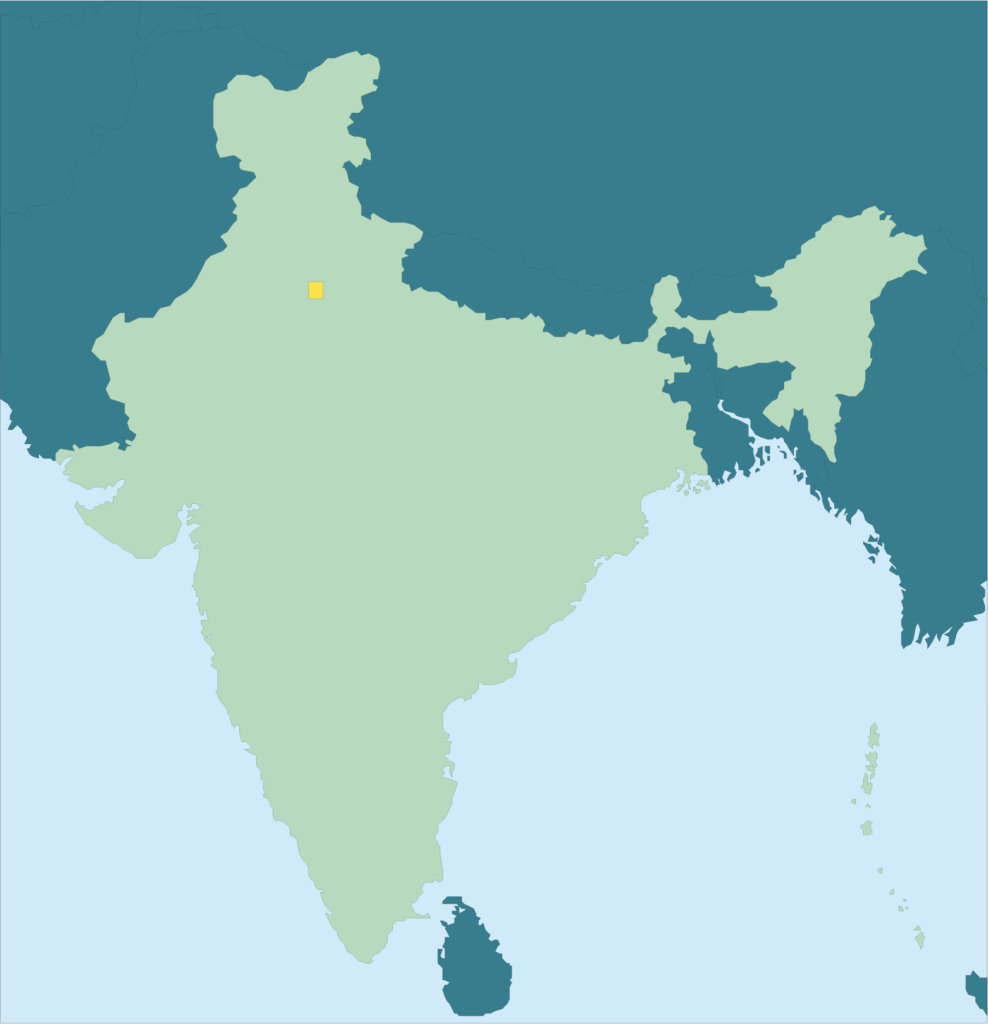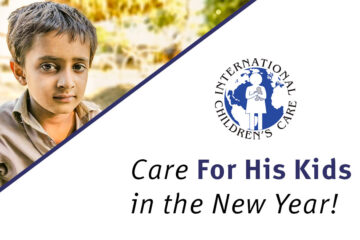Click the button to download a two-page flyer with Fast Facts about the D.R. Congo.
Thank you for making a difference in the lives of children!

Population: 1,281,935,911
Official Language: Hindi
Capital City: New Delhi
India is the second most populous country in the world, second only to its neighbor to the north, China.
India’s culture dates back to 4000 B.C.

People
India, (officially known as Bharat) has a population belonging to many different ethnic groups and religions. They speak 16 major languages and more than 1,000 minor languages and dialects. Hindi, the official language, is the 4th most spoken language in the world.
The ancient customs of India can be seen right along-side the latest advances in civilization. Many wear the traditional attire and carry supplies in woven baskets on their heads.
India’s earliest known inhabitants are believed to have come from the Australian continent. The dark-skinned Dravidians were among India’s first cultures. About 2,500 B.C., they created an advanced civilization in the Indus Valley, in the area now called Pakistan and western India.
Culture and Life Styles
Religion is a vital factor in the Indian way of life. Hindu and Muslim laws determine their clothing, food, and who they marry. Family ties also have great importance. The Indian culture regards marriage as more of a relationship between two families than between two people.
Hindu social classes are determined by castes. There are four main castes with thousands of subcastes. Each caste has a traditional occupation. Caste rules determine your social standing and who you may marry. Hindus cannot leave the caste to which they are born.
The chief foods of the Indian diet include such grains as rice, wheat, millet and pulses. A typical meal consists of rice with curry and dal, and a porridge made of pulses. Indians also enjoy chapatis, thin flat baked breads that resemble soft tortillas, as well as samosas, deep-fried pastries stuffed with potatoes, vegetables or meat. For special occasions, elegant foods are wrapped in a layer of silver so thin it can be eaten.
Living conditions are overcrowded throughout India. Each year the overcrowding becomes worse due to improved state sponsored health care, a lower death rate, and a rapidly expanding population. Inadequate sanitation and nutrition are the major health problems.
Many people leave the rural areas to look for work in the cities where wages are higher. As a result, India’s city population grows twice as fast as the population of the country as a whole. Some Indians have great wealth, but many other can only spend a few cents a day for the bare necessities of life.

Education
India more than doubled the percentage that could read and write during the early years of the nation’s independence. Education is provided free for students between the ages of 6 and 14 although many children drop out of school at a young age to get jobs to help support the family.
Housing
Most Indian villages consist of mud and straw huts crowded together. Village homes have only one or two rooms. Many of these homes have no running water or electricity. A few of the richer villagers may live in brick homes. India’s farm villages exceed 500,000 in number. Most of these villages have fewer than 1,000 people living in them.
By contrast, India’s cities are crowded beyond capacity. While certain sections are modern with high-rise apartment buildings and bungalows along tree-lined avenues, the major sections are crowded with narrow, twisting streets full of people, animals, and vehicles.
India’s cities have terrible slums. Entire families live in one room shelters made from scraps of wood and metal. Cooking is done on the floor without a chimney. Large areas are without public sanitation.
Thousands live and die in the streets never having had a home.
Economy
Even though India is a top 10 industrial nation, a world leader in tea, sugar, rice and cattle production, its economic gains are being absorbed by the rapid population growth.
With 718 people for every square mile of land, and a population growing as fast as the economy, India’s per capita income is one of the lowest for an industrialized nation.
India’s industries include railroads, aviation, automobile manufacture and the world’s largest movie making industry.
Agriculture accounts for 31 percent of India’s economic production. India is 1st in tea and sugar, 2nd in rice production, 4th in wheat production, and Asia’s premiere milk and butter supplier.
Government
India is governed under a constitution which includes many parts drawn from the United States Constitution. India’s President (a largely ceremonial off ice), appoints the Prime Minister, who in turn chooses the cabinet and heads the government with the support of the parliament.
How You Can Help
The mission of International Children’s Care is to bring hope and the gift of a new life to the orphaned and abandoned children of Guatemala. Through sponsorships, donations and volunteer service, you can give these children the chance in life that they so richly deserve.


